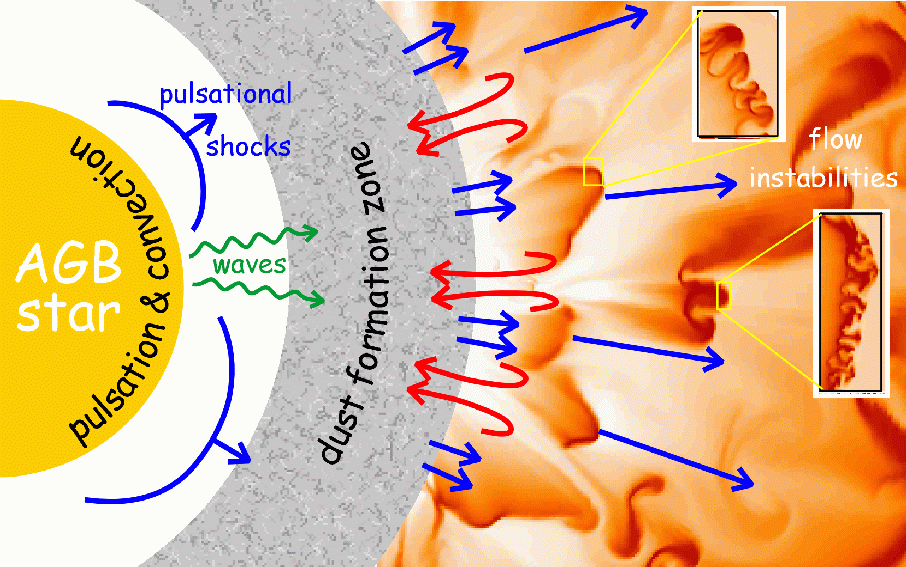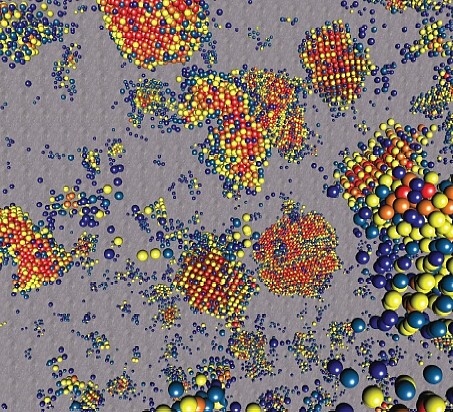|
Dust is not a primordial component of the Universe,
but produced in the first stars that lit up and died before
the galaxies.
These stars enriched the medium with elements heavier than
hydrogen and helium.
These so-called "metals" need to exist before the dust,
for they are the backbone of molecules and complex compounds.
Supernovae in the early Universe did the job to release the
nuclear ashes, namely carbon, nitrogen, oxygen, silicium,
iron, and many others.
The ubiquitous hydrogen stuck to the metal atoms and turned
them into simple molecules like water, methane, ammonium.
The next generation of stars were somewhat smaller, brigher,
and they had the ingredients to further process the nuclides.
|

|
|
The growth takes place in the envelopes of highly evolved
stars (AGB stars).
There, the local density of molecules is sufficiently high
and their kinetic energy is low, such that they attach to
build longer chains.
Temperatures of about 1,500 -- 2,000 K prevail,
while the density is high enough to allow physical collisions
between the nuclides and atoms.
Depending on the electro-chemical attraction and potential,
the molecules chain up to form a bulk association of substrates.
These AGB-stars, especially when thermally pulsating, exhibit
strong stellar winds that disseminate the multi-atomic
rubble piles into the surrounding gas.
|
Then, this mixture is traversed by shock waves and
UV-radiation.
It undergoes strong physical collisions without being smashed.
The condensate will experience hardening, growth, as well as
partial destruction and reorganisation.
The result is a core with heavy elements surrounded by simpler
and less massive molecule fragments:
A dust particle with a core-mantle-structure is born.
This process is called "nucleation".
When such dust particles float as large dark clouds in the
interstellar space, they will be suffering the next cycle of
star formation one day.
They merge on the macromolecular scale to form silicates
and rocks and planets.
Thus, dust is elementary for the existence of celestial
bodies.
|

|




